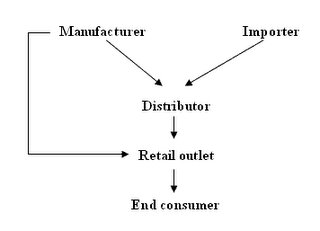TOYS MARKET PROFILE
The economic and financial crisis that also hit Indonesia in 1997 affected the development of the toy industry only temporarily; the drastic depreciation of the local currency reflected at the first instance in the increase of the cost of production for imported clothing materials as well as energy and labour cost. The export earnings, however, which are mostly transacted in foreign currency, benefited the manufacturers and somehow compensated for the losses made in importing required production materials and increase in energy and labour cost. Currently, several toy manufacturers are indeed struggling to survive but the actual reason is in the weak demand and slow economic growth in major export markets particularly in Europe, the USA and Japan. The domestic market became an alternative market for production out put. Although the overall current economic and financial condition in Indonesia seems to have partly recovered, the toy industry is still facing marketing difficulties domestically, not lastly because of imported and cheap toys from the People’s Republic of China, which have been flooding the domestic market and caused a more stiff competition.
Despite all the difficulties faced, the domestic market with totally 215 million people is an alternative and attractive market potential which has not yet been exploited to the fullest and with the expected full economic and financial recovery, increase of purchasing power and living standard, the domestic Indonesian market is definitely a market to be paid attention to. Indonesia’s population structure shows that approximately 50% of the populations are children and young people who are pretty much the target market for this product group. This target group is easily shaped and influenced by advertisements, especially television advertisements; characters from favored television movies and series are easily absorbed by and becoming favorites of the young television viewers and toy manufacturers have realized the importance and effectiveness of this media campaign to promote their products in the domestic market.
CHANEL AND DISTRIBUTIONS
The channel of distribution applied to is quite conventional; domestic toy manufacturers normally appoint toy distributors or traders as well as large retail outlets. Selected retail outlets such as department stores provide small manufacturers of traditional toys and games with retail space, where the trade agreed-upon is based on consignment or direct purchase method. Imported toys are normally channelled to general importers or distributors before reaching the retail outlets. Retail outlets in Indonesia such as department stores, supermarkets and hypermarkets always provide special sections for toys and games. There are also specialized toy retail stores, the famous ones are TOYS R US, KIDZ STATION and TOYS CITY. The following diagram illustrates the channel of distribution for toys in Indonesia:

Key success factor in marketing toys in Indonesia is the television advertisement, which plays a very decisive role in the children’s daily life in this country. The television advertisements have a very big impact on influencing and shaping the children’s and other young viewers’ taste and preferences for consumer goods. Currently there are 8 domestic television stations and each of them has programs specifically designed for children and young viewers and these programs are mostly sought by distributors in order to identify what type of toys and games the children would want.





0 Comments:
Post a Comment
<< Home